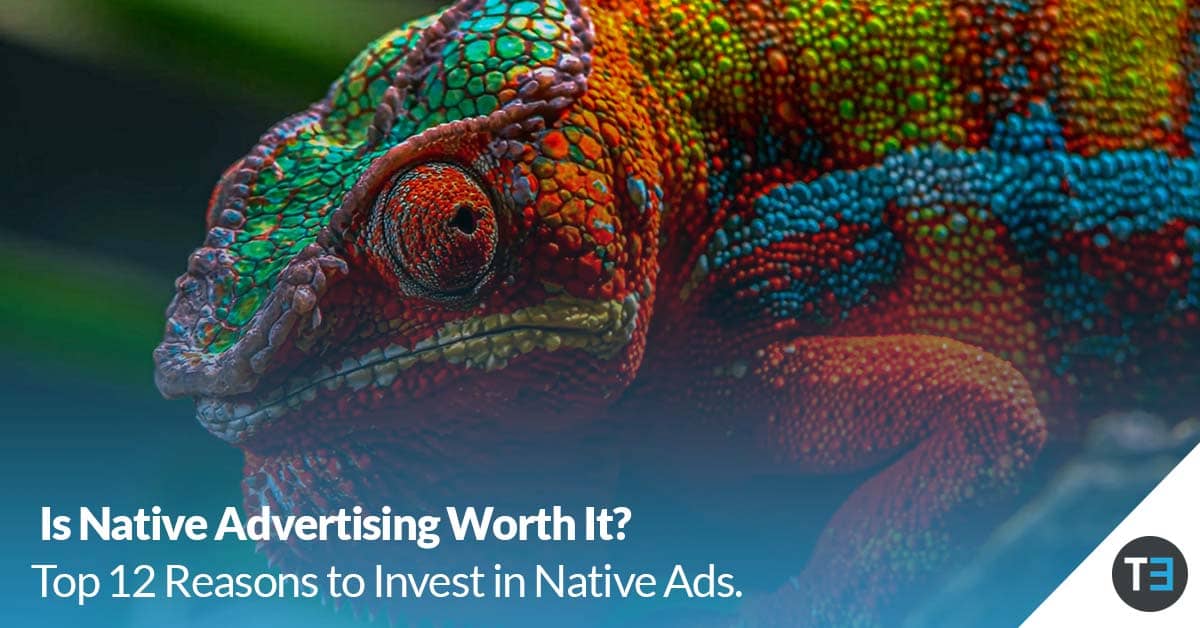12 Reasons Why Native Ads Are Better
7 Minute Read
Online consumers are getting more savvy. As the tolerance for obvious and intrusive ads continues to wane, advertisers have had to get creative and design ads that mimic the look and feel of the websites, apps, and feeds where users consume digital content.
There are a plethora of digital advertising solutions for reaching your target customers. However, native advertising offers unique benefits that enhance the customer’s digital experience rather than distracting from it.
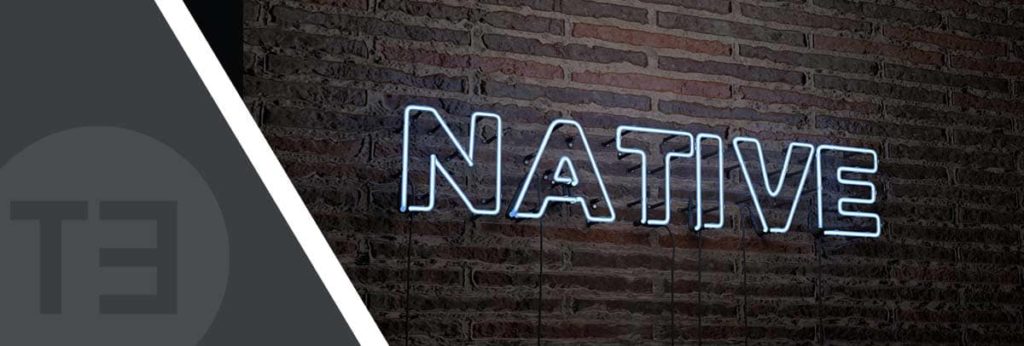
What Are Native Ads?
Native advertising is the “disguising” of ads on a webpage or within an app. Subtlety is key here. Whereas people will ignore or exit out of more obvious types of ads (such as pop-up ads), users may click on a native ad without even realizing it.
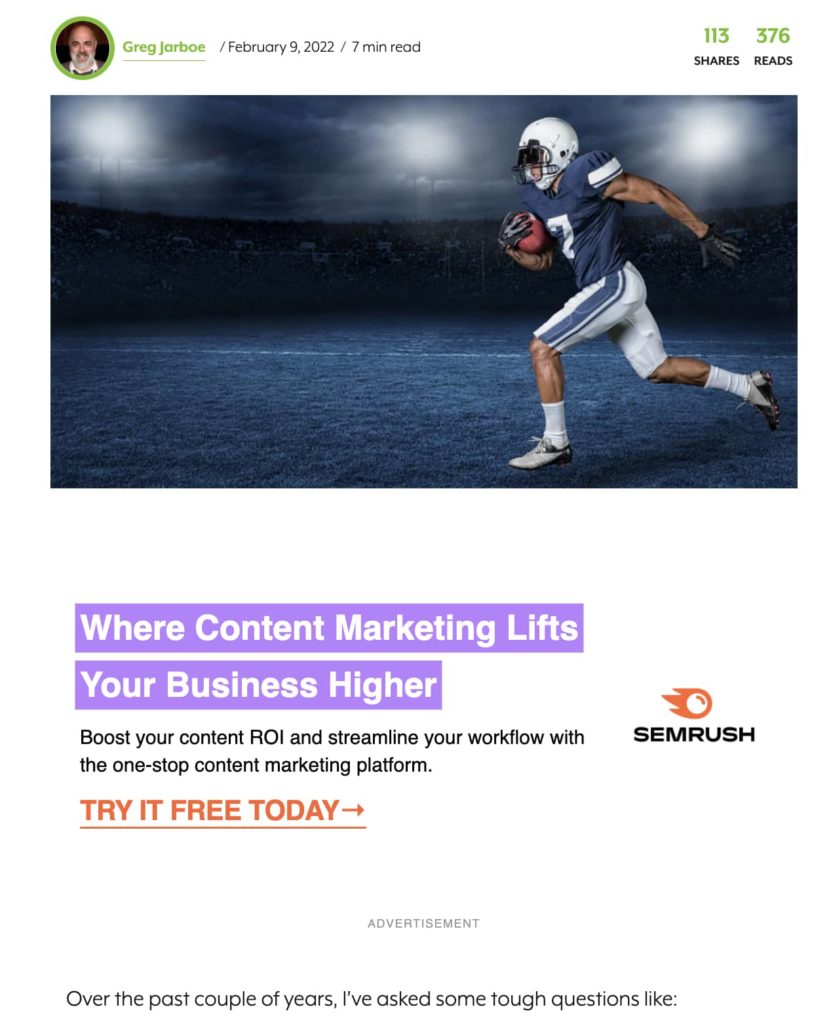
A native ad will appear on whichever page you are currently on and appear as though it is content on the web page. The same is true on a mobile device, with native ads appearing in the user’s content feed like other links.

Why Native Advertising Works
Native advertising is highly targeted. When users access a webpage, open an app, or even search online, the native ads served to them are based on the characteristics (geographic, demographic, etc.) your campaign is targeting. In addition, native advertising content has to be very similar to the site your targeted consumer is on.
For these reasons, native ads have a much higher click-through rate (CTR) because consumers think it is part of what they are browsing. Native ads are less bothersome to consumers, which results in more clicks and, if the destination is compelling and speaks to the user’s needs and goals, better results. Integrating rich media (such as images, video, etc.) can further improve the performance of native ads.
So how do native ads stack up against other common types of advertising campaigns?
Native Ads vs. Display Ads
Display ads are served in a variety of different ways, including:
- Responsive display ads: Display ads that are responsive automatically adjust to fit a user’s screen size and device type. Responsive display ads will soon be the default type of ad on the Google Display Network.
- Remarketing ads: These are ads for a business that are displayed across the web after a user accesses a particular website.
- Audience targeting ads: Advertisers can use various audience targeting parameters to deliver display ads based on their interests, demographics, life events, and more.
- Interstitial ads: Interstitial ads are served before a webpage loads. Users have to exit the ad to access the content they want to read.
- Video ads: Video ads run before users can access the video content they want to watch.
The variety of display advertising campaigns create multiple opportunities for marketers and advertisers. However, display ads still look and feel like ads, resulting in lower CTRs on average.
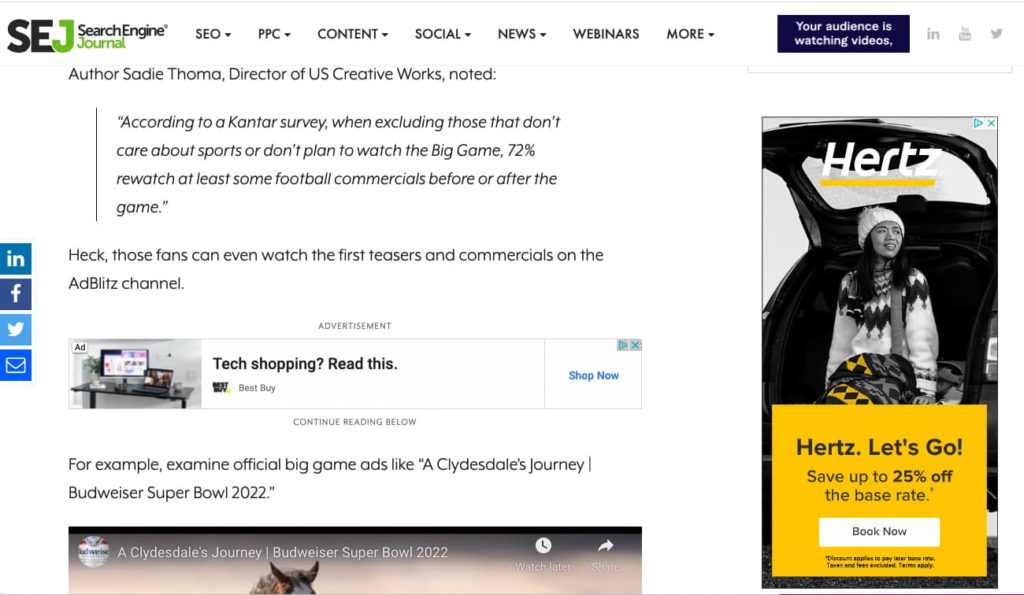
Native ads tend to perform better than display ads because they are discreet. The less obvious the ad, the more likely users are to interact with it.
Native Ads vs. Banner Ads
Banner ads are a specific type of display advertising campaign. As the name suggests, banner ads stretch across a webpage. They usually appear at the top of the page, but they might also display along the bottom or the sides.
In the infancy of the Internet, banner ads were among the most common forms of website advertising. While this means banner ads are in a sense tried and true, consumers have also gotten wise to the fact that they’re seeing ads. This has led to a phenomenon known as “banner blindness,” where visitors to a website will ignore the spaces where banner ads commonly appear.

Native ads are more seamlessly integrated with the website experience than banner ads. Counterintuitively, this makes consumers more likely to click on the ad than less.
Native Ads vs. PPC Ads
Google and other search engines are becoming more and more of a pay-to-play space. This makes PPC (pay per click) advertising an essential part of your marketing mix.
PPC ads on Google SERPs have evolved to look more and more like organic search results. As such, today’s PPC ads could be viewed as a kind of native advertising.
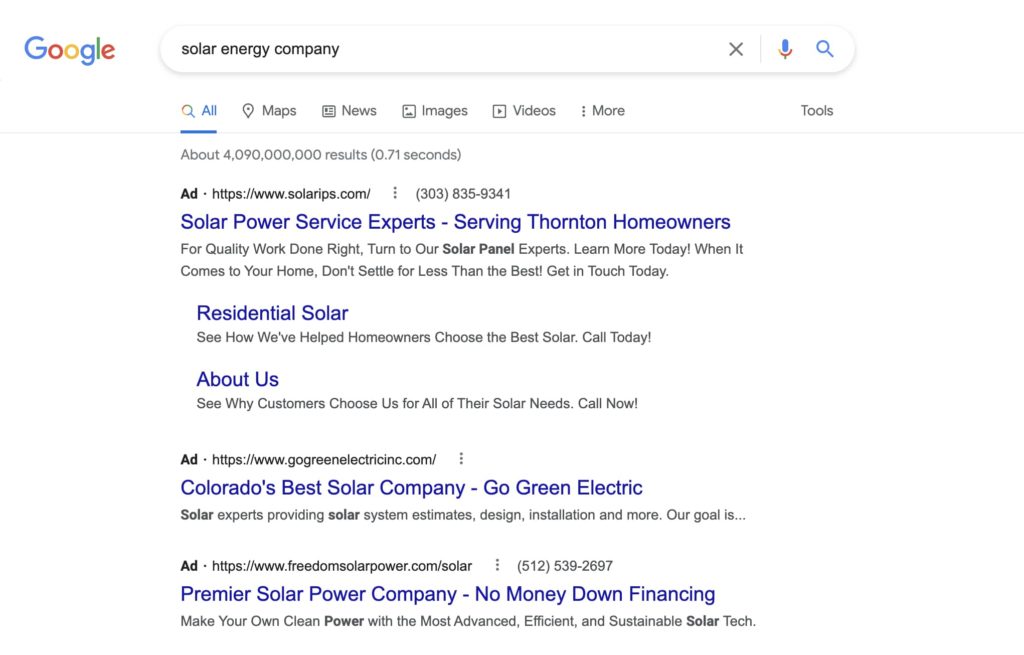
However, as of now Google still distinguishes between organic search results and paid ads. With this in mind, native advertising on websites and in apps has the advantage when it comes to an uninterrupted browsing experience.
Native Ads vs. Social Media Ads
Social media is another marketing and advertising medium where the look and feel of paid content is similar to what you see with native ads. Except for easy-to-miss labeling that identifies an item in the feed as a sponsored post or sponsored content, organic posts and native ads are virtually indistinguishable on social media platforms.
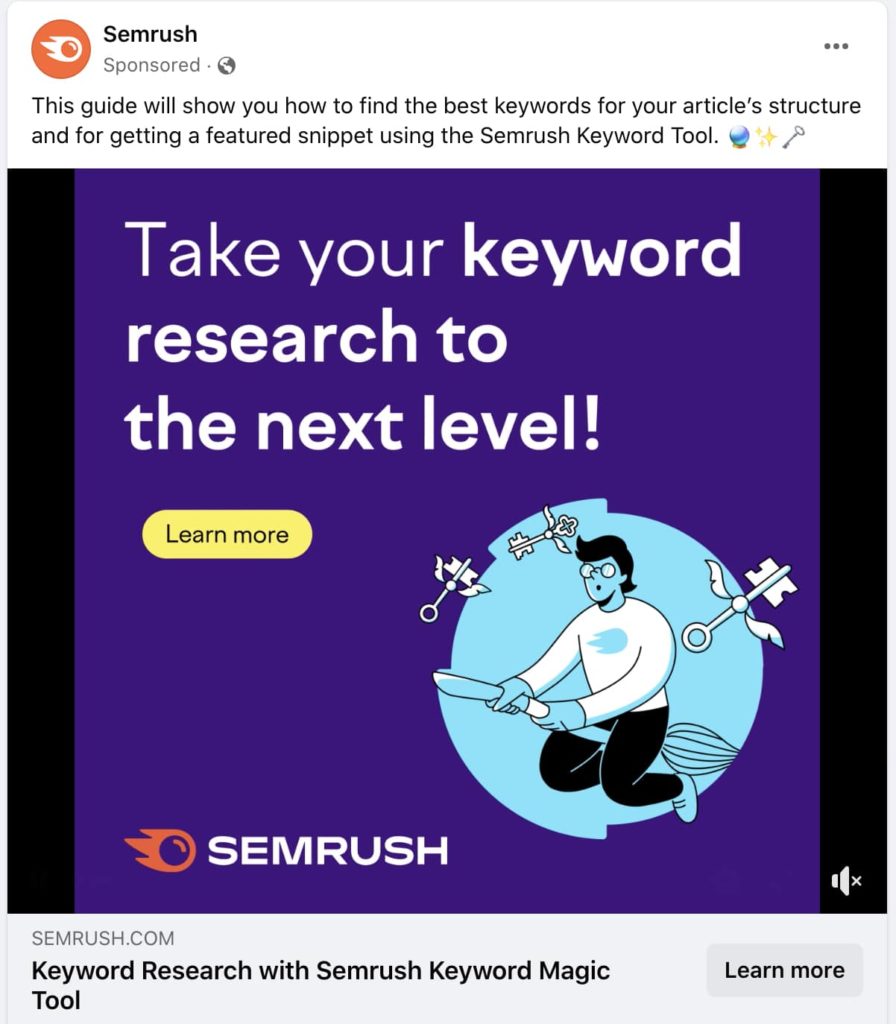
Native ads on social media are easy to share. However, users have to be on a particular site or app to see your ad. Other forms of native advertising appear on websites across the Internet, enabling your ad to reach more users without requiring a user login.

Top Reasons to Invest in Native Advertising Campaigns
No business has an unlimited advertising budget. For small and mid-sized businesses, the importance of a lean, results-focused ad spend cannot be overstated.
Here are some points to take note of that really demonstrate the power of native ads:
1. 70% of Customers Favor Content Over Ads When Learning About Products.
(Source: Responsify)
Today’s customers want to be part of a conversation, not talked at through advertisements. It should come as no surprise, then, that digital content will resonate with consumers more than ads. Therefore, it is important to optimize your ad spend to focus on content marketing and advertising that is more subtle.
2. People View Native Ads 53% More Than They Do Banner Ads.
(Source: Search Engine Journal)
This refers not to ad impressions but the number of users who stop what they’re doing and actually take time to look at an advertisement. Native advertising draws more attention than other kinds of ads.
3. Display Ads Have a 0.09% CTR on Average.
(Source: AppNexus)
Advertising fatigue among Internet users has led to lower and lower click-through rates on ads. CTR is one of the most important metrics for managing advertising success, and the performance continues to drop for display ads.
4. Native Ads, Meanwhile, Have a CTR of 0.80% on Average.
(Source: AppNexus (see above))
On average, the click-through rate on native ads is more than eight times higher than that of display ads. This can be attributed to the natural look and feel of native ads compared to display advertising.
5. Less Than 15% of Users Remember the Last Ad They Saw.
(Source: Infolinks)
More than 85% of Internet users suffer from banner blindness. In other words, if they can identify an advertisement as an ad, they are highly likely to ignore it or overlook it.
6. 32% of Consumers Say They Would Share Native Ads.
(Source: yellowHEAD)
Social shares are a mark of trust in a brand’s content. Users report that they are nearly twice as likely to share a native ad with a friend or family member than they are a display ad.
7. Native Ads Increase Brand Affinity 9% Over Display Ads.
(Source: Oberlo)
Brand affinity is a customer’s positive impression of your business and likelihood to buy from you. Native advertising is a more effective strategy for boosting brand affinity than display ads.
8. Customers Spend Nearly the Same Amount of Time Reading Editorial Content as They Do Native Ads.
(Source: Ignite Visibility)
On average, people spend 2 seconds on editorial content (such as webpages, blog posts, etc.) and 1 second on native ads content. This is significant, as it shows how effective native advertising is at driving and keeping a user’s attention.
9. Native Ads Containing Rich Media Have 60% Higher Conversion Rates.
(Source: SmartyAds)
A picture is worth a thousand words and a video includes multiple images per second. Consumers gravitate toward engaging visual and video content, so it should come as no surprise that native ads with rich media tend to garner more conversions than their static counterparts.
10. By 2025, Native Advertising Is Projected to Be Worth $400 Billion.
(Source: The Drum)
Marketing agencies and advertisers go where the money is. When a particular marketing or advertising channel is proven effective, more advertising budgets are devoted to competing in that sector. The native ads ecosystem is growing, and the value is only expected to increase in the coming years.
11. 84% of Publishers Receive No Complaints from Readers for Featuring Native Ads.
(Source: Native Advertising Institute)
Journalism and advertising have always had an uneasy relationship. Media consumers hate ads that interrupt the story. The cohesiveness of native ads with the overall user experience of a website makes it possible to advertise without raising the hackles of readers.
12. Purchase Intent Is 18% Higher with Native Ads.
(Source: Tinuiti)
Perhaps most importantly, consumers are more likely to buy after interacting with a native ad than they are after being exposed to a display ad. As such, those who invest in native advertising tend to get more bang for their buck.

Find Out Why Native Ads Are Better for Your Business
Native ads overcome many of the issues that have led to diminishing returns in other areas of digital advertising. They are highly targeted, seamlessly integrate on the page or in a stream, and tend to drive more conversions than other types of campaigns.
That said, it is crucial to zero in on your target audience and create compelling content and assets for your campaign before getting started with native ads. You need to know where your consumers are shopping, what articles they are reading, and what websites speak to their interests and passions.
At Twelve Three Media, our Digital Advertising Experts take the time and do the work to understand your target audience and develop effective native ads campaigns to drive more leads and sales for your business. We optimize each ad for maximum conversions and check our results to ensure that you get what you pay for.
Gain the unfair marketing advantage. Contact Twelve Three Media today to learn what native advertising can do for your business!
